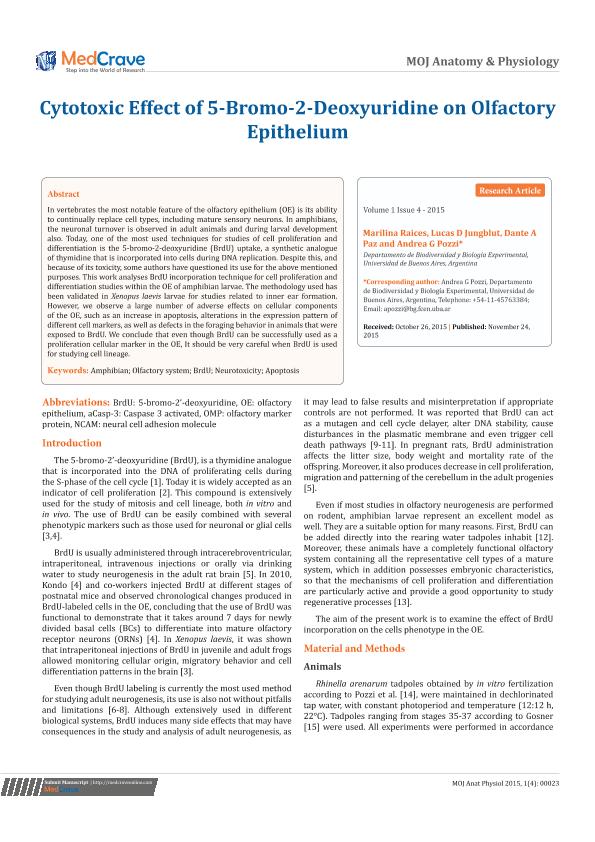Artículo
Cytotoxic Effect of 5-Bromo-2-Deoxyuridine on Olfactory Epithelium
Fecha de publicación:
11/2015
Editorial:
MedCrave
Revista:
MOJ Anatomy & Physiology
ISSN:
2471-139X
Idioma:
Inglés
Tipo de recurso:
Artículo publicado
Clasificación temática:
Resumen
In vertebrates the most notable feature of the olfactory epithelium (OE) is its ability to continually replace cell types, including mature sensory neurons. In amphibians, the neuronal turnover is observed in adult animals and during larval development also. Today, one of the most used techniques for studies of cell proliferation and differentiation is the 5-bromo-2-deoxyuridine (BrdU) uptake, a synthetic analogue of thymidine that is incorporated into cells during DNA replication. Despite this, and because of its toxicity, some authors have questioned its use for the above mentioned purposes. This work analyses BrdU incorporation technique for cell proliferation and differentiation studies within the OE of amphibian larvae. The methodology used has been validated in Xenopus laevis larvae for studies related to inner ear formation. However, we observe a large number of adverse effects on cellular components of the OE, such as an increase in apoptosis, alterations in the expression pattern of different cell markers, as well as defects in the foraging behavior in animals that were exposed to BrdU. We conclude that even though BrdU can be successfully used as a proliferation cellular marker in the OE, It should be very careful when BrdU is used for studying cell lineage.
Palabras clave:
AMPHIBIAN
,
OLFACTORY SYSTEM
,
BRDU
,
NEUROTOXICITY
Archivos asociados
Licencia
Identificadores
Colecciones
Articulos(IFIBYNE)
Articulos de INST.DE FISIOL., BIOL.MOLECULAR Y NEUROCIENCIAS
Articulos de INST.DE FISIOL., BIOL.MOLECULAR Y NEUROCIENCIAS
Citación
Raices, Marilina; Jungblut, Lucas David; Paz, Dante Agustin; Pozzi, Andrea Gabriela; Cytotoxic Effect of 5-Bromo-2-Deoxyuridine on Olfactory Epithelium; MedCrave; MOJ Anatomy & Physiology; 1; 4; 11-2015; 1-9
Compartir
Altmétricas




